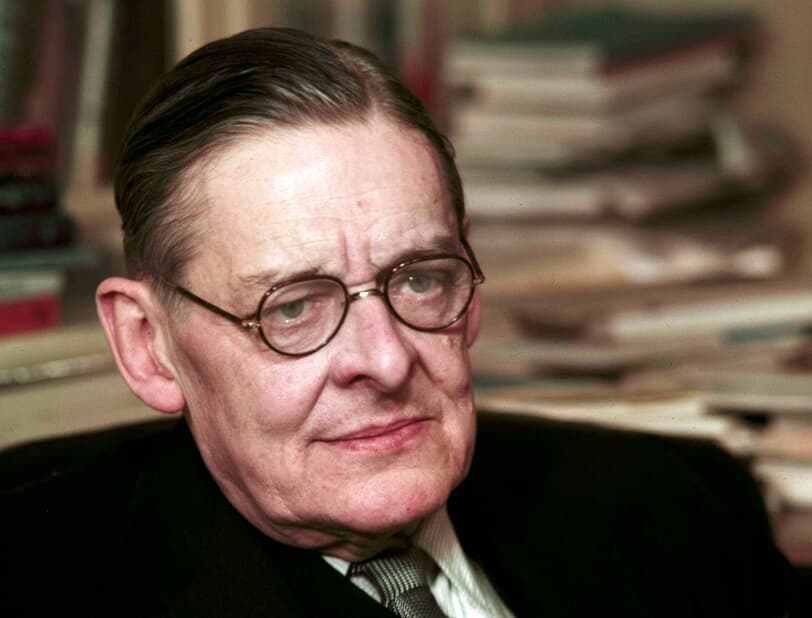Another Cad Uncovered: Excruciating Biography Outlines T.S. Eliot’s Breach of Promise to Emily Hale
Because Eliot destroyed Hale’s letters, biographer Sara Fitzgerald is sometimes at a loss as to exactly what Hale felt about a man who had assured her of so much and then delivered so little.

‘The Silenced Muse: Emily Hale, T.S. Eliot, and the Role of a Lifetime’
By Sara Fitzgerald
Rowman & Littlefield, 332 pages
T.S. Eliot said Emily Hale was the inspiration for the hyacinth girl in his reputation-making poem, “The Wasteland,” yet the apparent tribute to his loved one seems prophetic of his failure at commitment, as the girl approaches him with arms full of of hyacinths and her hair wet: “I could not / Speak, and my eyes failed, I was neither / Living nor dead, and I knew nothing.”
Depending on their color, hyacinths can symbolize joy or sorrow, and both seem possibilities in Eliot’s lines and in his hundreds of letters to Hale written over many decades from England as she in America awaited his promised proposal of marriage that never came — first because his religious faith forbid divorce from his mentally disturbed wife, Vivienne, and second (as he confessed to Hale after Vivienne died) because he could not imagine, after years of leading a single life, adjusting himself to another spouse.
The letters are the agon of Sara Fitzgerald’s excruciating biography, as Hale and Eliot go back and forth over just how they can be together. She waited and waited, proud and prostrated by his constant demand for her letters, which he seemed to devour in his English redoubt, hazarding only brief forays home to America and wary of her importunate, yet ladylike, desire for him.
The couple did lots of kissing in the fleeting moments they were together, but late in life Eliot wanted it known that they had not consummated their love, even though, as she seemed to imply to some of her friends, she had been engaged to the poet. In a cruel act that he justified as protecting her privacy, he destroyed her letters while making sure his own were preserved — even though he resented the prying of scholars and biographers into his private life.
Because Eliot destroyed Hale’s letters, Ms. Fitzgerald is sometimes at a loss as to exactly what Emily Hale felt about a man who had assured her of so much and then delivered so little — never entirely dashing her hopes until, late in life, he married his secretary without so much as telling Hale until after the wedding, and already having concealed from her the expectations of yet another woman, Mary Trevelyan, who hoped to wed him.
Ms. Fitzgerald’s biography, whatever the gaps in the evidence, is nonetheless a moving account of Hale’s life, filled with the satisfactions of teaching generations of drama and speech students as well as her excellent performances in several successful theater productions, even though she never pursued a professional career.
Beyond whatever romantic feelings Eliot had for Hale, she served as one of his best critics as later in life he turned to writing verse plays. He knew he could trust her to tell him the truth and to improve his stagecraft. She also introduced generations of students to Eliot’s poetry. In turn, he behaved as though their relationship had to be kept a secret, not even shared by his closest friends.
Even after Eliot’s second marriage, Hale put a brave face on his rejection of her, expressing her good wishes for his happiness and congratulating his new wife. Eliot, on the other hand, now concerned about what his letters to Hale revealed about him, made it his business to write a statement about her many faults, suggesting that he had never really loved her.
Ms. Fitzgerald is scrupulous about not using loaded language when reporting on Eliot’s duplicity. She does report, however, Mary Trevelyan’s testimony that Eliot was practiced in deceit and was good at not recognizing how he had betrayed others. Judging by his letters, Hale occasionally called him out on his prevarications and studied ambiguity, but in the main she remained loyal to him even after he died.
Since the biographer allows the reader to reach certain conclusions, a reviewer, in this case, will deliver. The poet who always appeared to be a gentleman, whose letters are full of his distaste for the vulgar, among whom his fellow Americans often numbered, shows himself in his treatment of Hale to be nothing less than a cad.
Mr. Rollyson’s biographies include “Amy Lowell Anew: A Biography” and “American Isis: The Life and Art of Sylvia Plath.”

